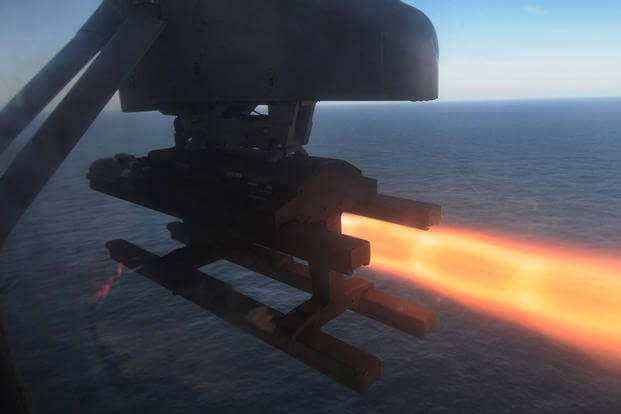The U.S. has adopted an Israeli tactic called a "knock operation," or "roof knocking," before airstrikes in the overall effort to limit civilian casualties in the campaign against ISIS, a U.S. military planner for Iraq and Syria said Tuesday.
U.S. warplanes used the tactic on April 5 in an airstrike on an ISIS "cash center" in the northwestern Iraqi city of Mosul that was only partially successful in avoiding killing civilians, said Air Force Maj. Peter Gersten, the deputy commander for operations and intelligence for Combined Joint Task Force-Operation Inherent Resolve.
Gersten said U.S. intelligence and aerial surveillance had determined that the building was used by the ISIS' "emir of finance" to dole out money and possibly housed as much as $150 million in cash. "We also watched occasionally a female and her children" coming and going from the building, Gersten said.
When the airstrike was authorized, U.S. aircraft first fired a Hellfire missile that set off an airburst above the building as a warning -- Gersten called it a "knock on the roof." He said that, "We absolutely did see the woman and child leave. Men in that building literally trampled over her to get out of the building."
However, the woman for unexplained reasons "actually ran back into the building" just as a precision-guided bomb was released. She was believed to have been killed, along with the "emir of finance," Gersten said. "In this particular event, it ultimately ended up in a civilian casualty."
The Mosul strike was the only time the U.S. has used a "knock operation" thus far, but "it's now part of our operational procedures" and could be used again, Gersten said.
In a video briefing from Baghdad to the Pentagon that was broken up repeatedly by transmission problems, Gersten was not entirely clear on whether the U.S. adopted the knock operation tactic after consulting with the Israelis or learned of it from open-source reports on Israeli strikes on Hamas targets in the Gaza Strip.
The Israelis occasionally would phone residents of buildings that had been targeted and also used the roof knocking technique during the 2008-2009 Gaza War, Operation Pillar of Defense in 2012, and Operation Protective Edge in 2014.
In line with the U.S. commitment to avoid civilian casualties, "We have to measure every weapon and every effect we bring to the battle space," Gersten said. He disputed reports by human rights groups alleging that as many as 1,200 civilians in Iraq and Syria have been killed since the U.S. air campaign began in August 2014.
Last week, U.S. Central Command reported that at least 20 civilians had been killed and 11 wounded in airstrikes in Iraq and Syria between last September and February, bringing the total number of civilians killed in the air campaign to at least 41. The civilian death cited by Gersten in Mosul would bring the total to 42.
"We deeply regret the unintentional loss of life and injuries resulting from those strikes and express our deepest sympathies to the victims' families and those affected," CentCom said in a statement.
-- Richard Sisk can be reached at richard.sisk@military.com.






























